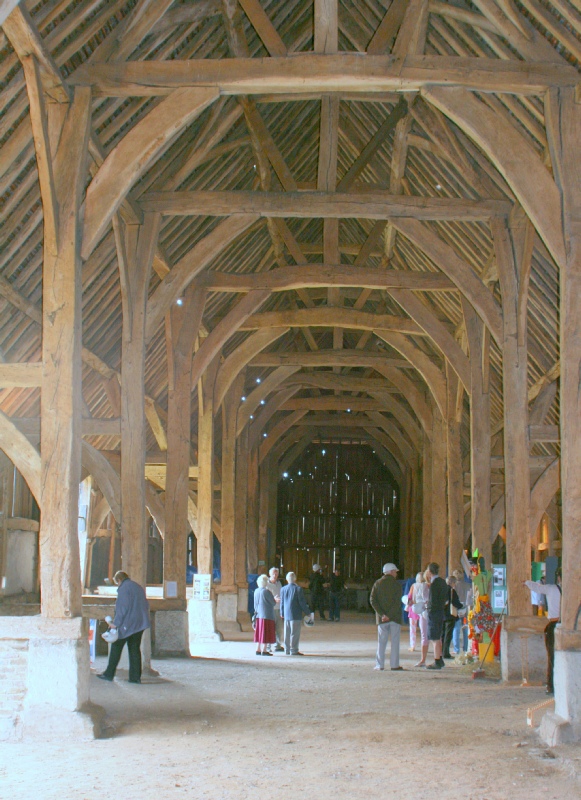An aisled barn gives a much greater volume of covered space for a given length and so most of the aisled barns are in fact “great barns”. They also display the greatest variety and complexity of carpentry. In my opinion, the aisled barn is the apex of barn building in this country.
Rather than having a box with triangular trusses supporting the roof, the aisled barn is similar in design to the traditional medieval church with a row of aisle-posts supporting the roof trusses with an aisle on each side and a “nave” down the centre. Sometimes as in churches there is only one aisle.
Aisled barns are the predominant form in the south and east, particularly in Essex and Kent. I was surprised how many there are also in the north, with fine examples at Wycoller, East Riddlesden Hall and Gunthwaite Hall. Many of the Northern barns have stone walls.
The great barn at Harmondsworth, was described by John Betjeman as a ”wooden cathedral”. Another enthusiast for old buildings, William Morris, described the aisled barn at Great Coxwell as “the most impressive building in England,” and “as beautiful as a cathedral”.
I have divided the aisled barns into timber-framed where the walls are an integral part of the frame and stone aisled barns where the aisle posts have tie-beams to the walls and the ends of the rafters rest on a wall plate on top of the wall. In either case the aisle posts carry most of the weight of the huge roof.
One of the reasons for the survival of these huge barns, was that they were very adaptable. Hay, barley and other crops could be stored in individual bays, separated by hurdles supported by the aisle posts and wall posts. If a farm changed to predominantly animal husbandry as happened on many estates in the eighteenth century, the animals could be stalled in the aisle-bays leaving the nave for movement and the removal of waste.
